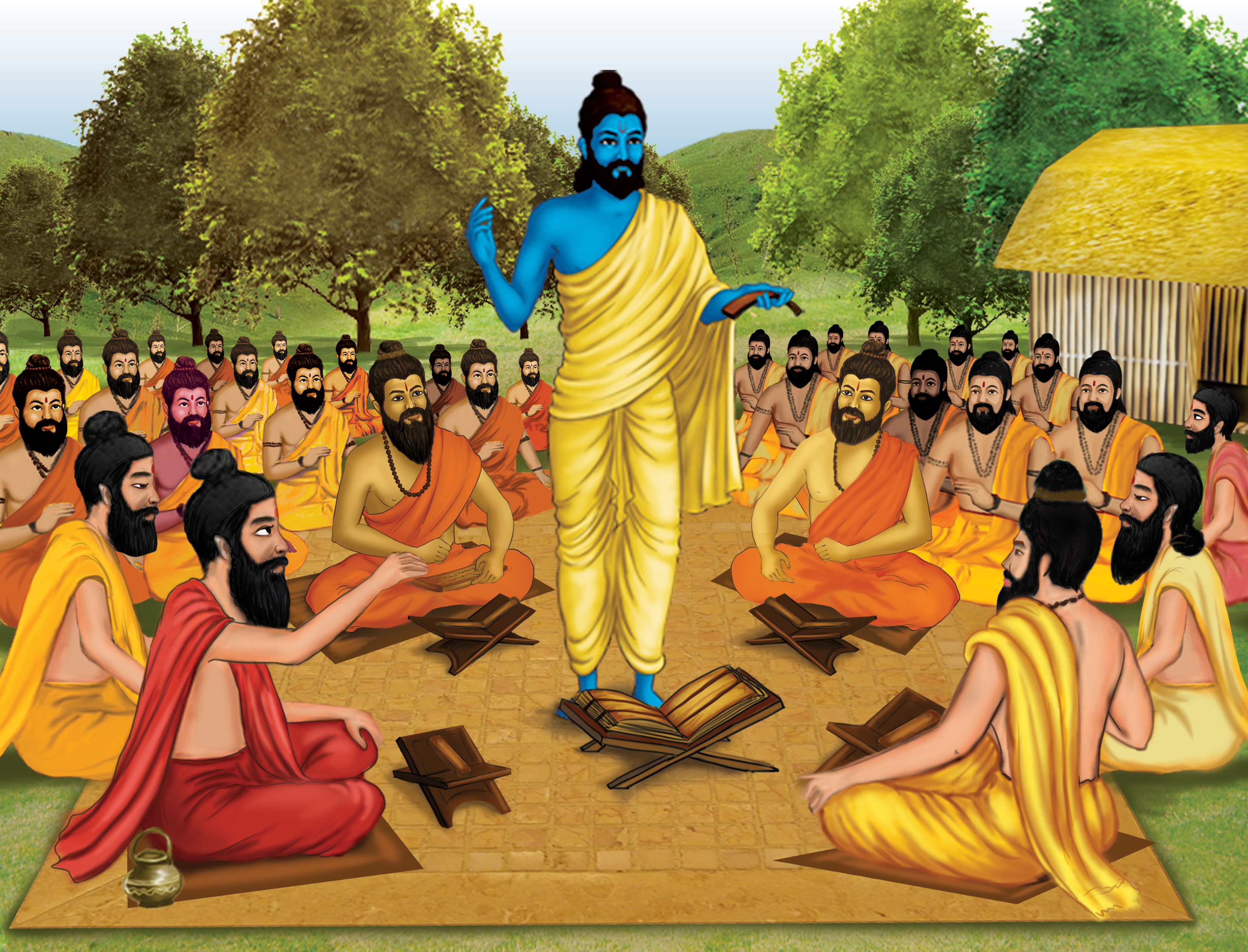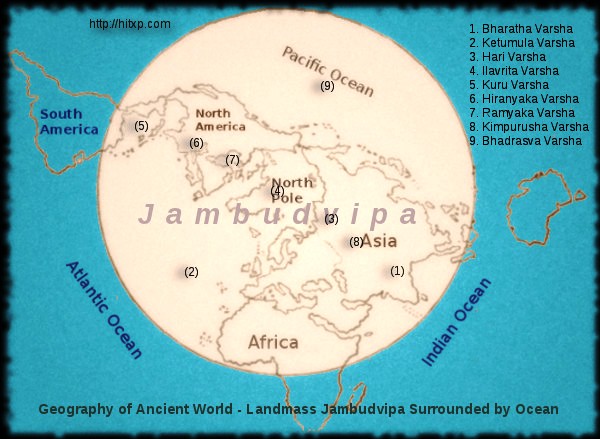Since birth till death, human life passes through different stages. For the purpose of simplicity in following these stages, our sages have made provisions for four stages or ashramas in life namely Brahmacharya, Grihastha, Vanprastha and Sanyas.
Upanayana Sanskara (thread ceremony) marks the beginning of education for the children born in Brahmin, Kshatriya and Vaishya classes. For this purpose, a disciple must stay in his teacher's hermitage and observe celibacy strictly. There, he must serve his teacher and worship Surya and Agni. The disciple is expected never to disobey his teacher. Activities should be according to the teacher's guidelines. He should also make arrangements for the daily worship of his teacher in the way of collecting different materials like Havan samagri, water, Kusha, flowers etc.
After the completion of education and paying all the dues, the disciple is ready to start second stage of his life that is Grihastha ashrama. For this he should first find a suitable girl from his class and make merry. During this stage, he should earn his livelihood by occupations ascribed for his class. He should please the gods by Yagyas, his ancestors by oblations, Prajapatis by producing children, spectres by offering sacrifices of cereals and society by love. Even the ascetic and celibates depend on married people for their daily bread. Hence married life or Grihastha ashrama is stated to be excellent among all the ashramas.
A Grihastha must welcome and warmly treat the guests who arrive unexpectedly. Such a household from where a guest returns desperately never succeeds in religious matters. All the worship and Yagyas offered in such a household go futile. Hence it is not proper for the householder to show ego and abuse a guest otherwise he will have to expiate for it later.
A person must always be on alert to recognise the time when it is apt to take Vanprastha. When the children grow and begin to hold the responsibility of the household, one enters the third stage i.e. Vanprastha ashrama. So, leaving his wife in the shelter of his children or taking her with him, one should migrate to the forest and live a simple life sustaining on whatever little is available from the nature. This stage must be passed observing severe penance and restraining one's senses. Sanyas ashrama is the fourth stage of life. One should give up all activities related to Dharma, Artha and Kama in this stage. He should keep an impartial view for all and cultivate a feeling of love for all the creatures. He should not hurt anybody by his words, actions or even thoughts. He should not stay in a village or town for more than five days. He should sustain his life on alms.

CUSTOMS AND CONSECRATIONS
At the time of childbirth, it is the father's responsibility to carry out certain customs and consecrations for the child. First of all, Jatakarma Sanskara is carried out by which the newly born baby is included in the family. During this custom, a Brahmin couple is fed. It is also necessary for the couple that they should sit facing east while feeding. Thereafter, the parents should offer oblations to appease the gods and dead ancestors. Lumps made of barley flour, curd and berries should be offered as oblations. Similar consecrations are carried out at the time of children's marriage.
On the tenth day after the birth, the naming ceremony is carried out. Different castes and religion have different traditions regarding naming the newly born child. It is commonly seen that most of the children are named after the deities and gods. Still one should see that the name should not be meaningless, abusive or inauspicious. Practice of selecting exceptionally long and difficult to pronounce names should also be avoided.
The second stage in a child's life is when he or she begins education. In ancient times, thread ceremony used to be carried out and the children were sent to their teacher's hermitage for education. In modern age, thread ceremony is followed more or less in similar way as it used to be in the past. But children are not sent to Gurukul for education any more. After completing education, a person should get married and run his own life. In the past, there had been elaborate rituals for the selection of suitable bride. Elders of the house used to select a proper match for the boy. Their choice in most cases depended on many attributes and bodily features of the girl. But in modern age, with increased interaction among the people, it is not possible to follow each and every custom related to selection of bride. Still one should take care not to marry in his mother's lineage for up to fifth generation and in his father's lineage up to seventh generation.
DESCRIPTION OF RIGHTEOUSNESS
A married man knows the importance of following a righteous discourse. Married life is like a penance in which a couple gives birth and raises next generation. A married man is expected to get up early in the morning and contemplate on religious things. It helps him to follow righteous discourse. He is expected to attend nature's call in natural environment away from his house. Soil is considered the best means to wash hands. It should be followed by cleansing of the body. He should then offer oblations wearing fresh clothes to sages, deities and his dead ancestors. Offering oblations to the Sun, worship of tutelary god and other deities follows then.
If the household is having some cattle, the head of the family should himself milk them and then wait for the guest. If and when a guest arrives, the head of the family must offer him a seat respectfully and treat him well with delicious food and pleasant talk. In Indian tradition, a guest is regarded equal to a deity. He should take food only after feeding the guest. Evening time has also elaborate rituals for a married man. First of all, after finishing daily chores, a married man must worship with peaceful mind. It is also good for his health to take food early in the evening and retire to a wooden bedstead. Night time is considered suitable period for enjoying carnal pleasure. Here too, a married man should enjoy intimacy with his wife only.
SANCTIFICATION AFTER BIRTH AND DEATH
Life on earth is like an infinite ocean in which birth appears like a bubble and death marks the bursting of that bubble after which it exists no more. Atmosphere of a household is said to be defiled when a birth or death occurs in it. There are different sanctifying customs to be carried out on both these occasions. After the birth of a son, the father should offer oblations to please the gods and his ancestors after taking a bath.
When a death occurs in a household, close relatives should take bath and carry the cadaver adorned with flowers and garlands outside the village or well-demarcated cremation ground for cremation. As per the religious tradition of the deceased, the body should either be consigned to the flames or buried. Then the relatives should again take bath in the pond or river facing south and offer watery oblations to the dead person. Since that day, Pindadan (offering sweet balls made of barley flour, sesame seeds, jaggery and honey) should be done for ten days. On the fourth day of the cremation, ashes should be collected for immersion in holy places of pilgrimage.
The person who had carried out the cremation must abstain from intimacy for thirteen days. Outsiders are also barred from eating cereals from such a household where a death has occurred. For the different classes of Hindu society, this sanctifying period varies. For Brahmins, it is ten days, for Kshatriyas, it is twelve days, for Vaishyas, it is fifteen days and for Shudras, this period has been fixed for one month. On the same day in every subsequent month, oblations should be offered to the dead for one year.
DAYS FOR MONTHLY OBLATIONS
A Shradha carried out with devotion pleases the entire world including human beings, Brahma, Indra, Rudra, Ashwini Kumars, Surya, Agni, Vasugana, Marudgana, Vishwadeva, Pitragana, birds, animals, reptiles, sages and of course the dead ancestors. Moonless and eighth day in the darker phase of every lunar month are considered the best days for offering oblations to the dead ancestors.
Apart from these two, third day in the brighter phase of Vaishakh, ninth day in brighter phase of Kartik, thirteenth day in the darker phase of Bhadrapad and Amavasya of Magh are also considered excellent. During lunar and solar eclipses also, oblations should be made with water and sesame seeds. If Shatabhisha Nakshatra occurs on Amavasya of Magh, it is considered an excellent conjugation for offering oblations to dead ancestors.
Bathing in rivers like Ganga, Sutlej, Yamuna, Vipasha, Saraswati, Gomti, Godavari etc. while making oblations is also said to be extremely benefiting. It is not necessary also to show great pomp and show while making oblations. If one doesn't have enough money to offer oblations properly, he may simply pray the Sun saying that 'he is not fortunate enough to have wealth'. Thus, his ancestors would be pleased by his devotion alone.
METHOD FOR OBLATIONS
While making oblations to the dead ancestors, one should feed his near and dear ones as well as learned Brahmins who respect their parents. Intimacy with women is barred for those who have taken food in an oblation. Any guest who happens to arrive unexpectedly and uninvited should be treated well. Before feeding, plain cereals should be offered thrice to the fire reciting following hymns.
AGNAYE KAVYA VAHANAYE SWAHA | SOMAY PITRAMATE SWAHA | VAIVASVATAY SWAHA ||
Remaining cereals then should be served with the food to the Brahmins and some parts should also be cast on earth and water should be offered on them.
After the feast, the Brahmins should be seen off with respect. The host should then take food along with his family. Anger over enthusiasm and walking on the street is forbidden for the host during oblation period.
DO'S AND DON'TS DURING OBLATION
Oblation with flesh of fish, rabbit, mongoose, hog, deer, gram flour and cereals cause extreme satisfaction for the ancestors. But in modern Kali Yuga, all types of flesh are forbidden in oblation rituals. Only cereals, milk, honey, etc. are allowed. Offering of oblation in Gaya (a place of pilgrimage in Bihar) is said to save all the ancestors. Barley, wheat, rice, sesame seeds, peas, and mustard are the common cereals and grains used in oblations.
Offering of oblation is a sacred affair. During the procedure, care should be taken that an eunuch, Chandala, sinner, imposter, patient, cock, dog, a naked person, monkey, pigs, a woman in menses, and anybody in whose house a death or birth has occurred don't see the performer otherwise neither the deities nor the ancestors would accept the oblations.
Water used in oblation should also be free from odour and foam. Milk of camel, sheep, doe and buffalo should not be used in oblations. Before beginning the ritual, drive out the evil spirits from the selected piece of land. It should be cut off from outside influences through enclosures.





